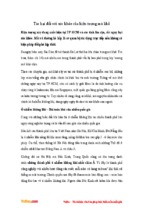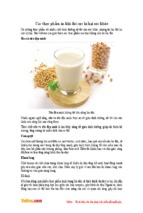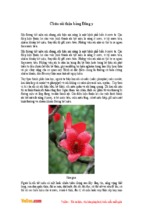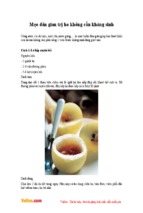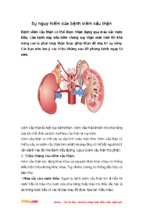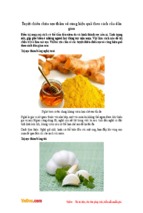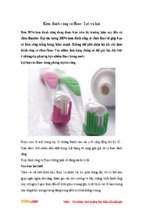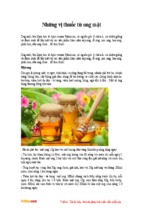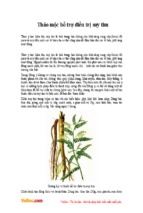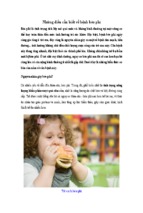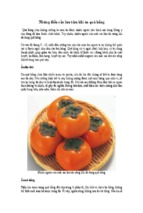INVASIVE ALIEN FLORA OF INDIA
C. SUDHAKAR REDDY, G. BAGYANARAYANA, K.N. REDDY &
VATSAVAYA S. RAJU
Front cover
Left to right
Eichhornia crassipes, Parthenium hysterophorus, Lantana camara, Hyptis suaveolens
Hill (on the way to Saptasajya, Dhenkanal district, Orissa) showing complete infestation by
invasive species (Chromolaena odorata)
3. Information of Plants
Acacia farnesiana
Family: Mimosaceae
Pop. Name: Fragrant Acacia
Nativity: Trop. South America (introduced in
India before 1832)
Distribution in India: Throughout
Propagation: Seeds
Fl & Fr: August – March
Citation: Acacia farnesiana (L.) Willd. Sp. Pl. 4: 1083. 1806; FBI 2: 292; 1878. Gamble 1: 425 (301). 1919.
Mimosa famesiana L. Sp. Pl. 521. 1753.
Description: A shrub or small tree. Stems grey. Spines straight, often paired, 0.5 - 1.4 cm long. Pinnae 2-7 pairs.
Leaflets small, elliptic, 5 x 1 mm, 10-15 pairs, overlapping, petiole with a gland near the middle. Flowers goldenyellow, foetid, in axillary, fascicled heads. Pods 3.5-7 x 1.2 cm, thick, cylindrical, hooked at the tip, pulpy inside.
Remarks: Occasional in thorny scrub and dry degraded forests and often creates close thickets through which cattle
cannot move.
Acacia mearnsii
Family: Mimosaceae
Pop. Name: Black Wattle
Nativity: South East Australia
Distribution in India: Western Ghats
Propagation: Seeds
Fl & Fr: August – March
Citation: Acacia mearnsii De Wild. Pl. Bequaert. 3:61. 1925.
Description: Tree to 12 m tall; crown conical or rounded; stems without spines or prickles. Leaves bipinnate, on
petioles to 2.5 cm long, with a gland above; rachis 4–12 cm long with numerous raised glands all along its upper
side; pinnae in 8–30 pairs, pinnules in 16–70 pairs, linear-oblong, 1.5–4 x 0.5–0.75 mm. Flowers in globose heads,
pale yellow. Pods moniliform, dehiscing, usually 3–10 x 0.5–0.8 cm, with 3–14 joints; seeds black, smooth.
Remarks: Introduced for afforestation in Western Ghats. Regenerates rapidly after fire and forms dense thickets. It
is distributed in forests and grazing lands in high altitude areas.
Acanthospermum hispidum
Family: Asteraceae
Pop. Name: Nativity: Brazil
Distribution in India: Throughout
Propagation: Seeds
Fl & Fr: July – January
Citation: Acanthospermum hispidum DC. Prodr. 5:522. 1836; Gamble 2: 704(476). 1921.
Description: Erect, diffusely branched, hispid, annual herbs. Leaves opposite, obovate, spathulate, scabrous, 2.56 x 1-3 cm, base cuneate, margin serrate, apex acute. Heads sessile, solitary in the forks of dichotomous
branches, greenish yellow. Achenes 5-10, triangular, spinescent with 2 large, horn like, erect, apical spines.
Pappus absent.
Remarks: Troublesome weed in cultivated fields and scrub lands.
Aerva javanica
Family: Amaranthaceae
Pop. Name: Nativity: Trop. America
Distribution in India: Throughout
Propagation: Seeds
Fl & Fr: August – February
Citation: Aerva javanica (Burm.f.) Juss.ex Schult. Syst. Veg. Ed. 15.5: 565. 1819; FBI 4: 727. 1885. Iresine
javanica Burm.f. Fl. Indica 212.t. 65.f.2. 1768. Aerva tomentosa Forssk. Fl. Aeg.-Arab. 122. 170. 1775; Gamble
2: 1178 (824). 1925.
Description: Annual, erect herbs to 75 cm tall. Leaves alternate, linear-oblong, 3-5.5 x 0.7-0.9 cm, sessile, base
attenuate, margin undulate, apex acute to obtuse, white-tomentose. Inflorescence terminal, in white-woolly spikes,
to 12 cm. Flowers unisexual, stigmas 2, as long as style. Utricle circumscissile. Seeds annular, testa shiny, black.
Remarks: Occasional weed of open forests, waste lands and cultivated fields.
Aeschynomene americana
Family: Papilionaceae
Pop. Name: American Joint-vetch
Nativity: Trop. America
Distribution in India: Andhra Pradesh, Bihar,
West Bengal, Orissa, Kerala, Tamil Nadu
Propagation: Seeds
Fl & Fr: August – January
Citation: Aeschynomene americana L. Sp. Pl. 713. 1753; Chandrabose & Sriniv. Bull. Bot. Surv. India 18: 236.
1976; Saxena & Brahmam, Fl. Orissa 1: 446-447. 1994.
Description: Annual, decumbent or erect herbs to 75 cm tall; branches hirsute. Leaves 1.5-5 cm long, rachis
hirsute, petiole about 3.5 mm long; leaflets 10-25 pairs, margin ciliate-toothed, subfalcate, about 7 x 1.2 mm,
glabrous, with strong main nerves. Racemes up to 3 cm long, 4-8-flowered, peduncles and pedicels hairy.
Flowers yellow, standard petal orbicular. Pod short, stalked, slightly curved, 2-2.5 – 0.3 cm; joints usually 6-8.
Remarks: Occasional weed of edges of tanks, pools, ditches and marshy lands..
Ageratina adenophora
Family: Asteraceae
Pop. Name: Eupatory, Crofton weed
Nativity: Trop. America
Distribution in India: Kerala, Tamil Nadu
Propagation: Seeds
Fl & Fr: August – February
Citation: Ageratina adenophora (Spreng.) King & Robinson, Phytologia 19: 211. 1970. Eupatorium adenophorum
Spreng., Syst. 3: 420. 1826; E. glandulosum Kunth, Nov. Gen. Sp. 4: 122. 1820, non Mixhaux, 11803; Matthew,
Rec. Bot. Surv. India 20: 135. 1969.
Description: Perennial, glandular hairy, erect herbs to 1 m tall. Leaves opposite, deltoid-ovate, margin serrate, purple
below, leaf blade 3-8 cm, Inflorescence clustered, in corymbose cymes; phyllaries glandular-puberulent, heads
homogamous. Flowers 10-60 per head, cylindric, corolla white, pink tinged. Achene 5 angled, 5 ribbed, pappus white,
feathery.
Remarks: Occasional weed in forest clearings and along road sides at higher elevations in Western Ghats.
Ageratum conyzoides
Family: Asteraceae
Pop. Name: Goat weed
Nativity: Trop. America (introduced in India
during the 16th century)
Distribution in India: Throughout
Propagation: Seeds
Fl & Fr: July – January
Citation: Ageratum conyzoides L. Sp. Pl. 938. 1753; FBI 3: 243. 1881; Gamble 2: 672 (476).1921.
Description: Annual, erect, foetid herbs up to 1 m tall. Leaves ovate to triangular, 3-8 x 1-3.5 cm, base
rounded or truncate, margin serrate, apex acute or acuminate. Heads in terminal corymbs. Florets blue or
white. Achenes black, 5-angled. Pappus scales 5, serrate, awn-tipped.
Remarks: Aggressive colonizer. Troublesome weed in gardens, cultivated fields and forests.
Ageratum houstonianum
Family: Asteraceae
Pop. Name: Blue Mink, Floss Flower
Nativity: Trop. America
Distribution in India: Throughout
Propagation: Seeds
Fl & Fr: July – February
Citation: Ageratum houstonianum Mill. Gard. Dict. 8: 2. 1768. A. conyzoides L. houstonianum (Mill.) Sahu in
Feddes Repert. 93: 61-65. 1982.
Description: Annual, erect and often much branched herb; stems leafy, pilose or villous with spreading hairs.
Leaves opposite, on rather long, slender petioles, very thin, broadly deltoid-ovate, 4-8 cm long, obtuse or acute,
base cordate, coarsely crenate, thinly villous-hirsute. Heads numerous lavender or pale blue, many flowered;
Achenes black, 1.2 mm long
Remarks: Introduced as an ornamental. Occasionally, grown in high altitude areas of Himalaya and Western Ghats
in fringes of forests.
Alternanthera paronychioides
Family: Amaranthaceae
Pop. Name: Nativity: Trop. America
Distribution in India: Throughout
Propagation: Seeds
Fl & Fr: August – November
Citation: Alternanthera paronychioides A. St. Hil.Voy. Distr. Diamous Bresil 2: 43. 1833; C. Towns in Dassan. &
Fosb. Rev. Handb. Fl. Ceylon 1: 50. 1980.
Description: Prostrate, creeping herbs; stem with long crisped hairs on the younger parts. Leaves oblanceolate-elliptic,
1-1.3 x 0.5-0.7 cm, sessile, hairy. Flowers in numerous heads. Utricle orbicular, seed discoid, 1 mm across, faintly
reticulate.
Remarks: Occasional weed along edges of tanks, ditches and in marshy lands.
Alternanthera philoxeroides
Family: Amaranthaceae
Pop. Name: Alligator weed
Nativity: Trop. America
Distribution in India: Throughout
Propagation: Vegetative
Fl & Fr: August – November
Citation: Alternanthera philoxeroides (Mart.) Griseb. in Abt. Ges. Wiss. Goett. 24: 36. 1879; Raju in
Indian Bot. Reptr. 5: 207-208. 1986. Bucholzia philoxeroides Mart. Beitr. Amar. 107. 1825.
Description: Aquatic or marshy prostrate herbs, with many erect branches, lower nodes rooting, stem fistular.
Leaves opposite,elliptic-lanceolate to obovate-lanceolate, upto 7 x 1 cm, base narrowed down to an indistinct
petiole, glabrous. Inflorescence axillary, in globose peduncled heads; rarely flowers but with no seed set.
Remarks: Aggressive colonizer. Troublesome weed in stagnant water bodies, drainage channels and marshy lands.
Alternanthera pungens
Family: Amaranthaceae
Pop. Name: Nativity: Trop. America
Distribution in India: Throughout
Propagation: Seeds, Vegetative
Fl & Fr: August – December.
Citation: Alternanthera pungens Kunth in H.B.& K. Nov. Gen. Sp. 2: 206. 1817. Achyranthes repens L.
Sp. Fl. 205. 1753.
Description: Spiny, prostrate herb to 50 cm; branches vilous-hairy. Leaves of the same pair unequal, obliquely
elliptic to suborbicular, opposite-decussate, 1.5-3 x 1-2 cm, attenuate to cuneate, apex obtusely apiculate; spikes
2 or more, 0.5-1.5 x 0.5-1 cm, in axillary clusters, seeds discoid, 1 mm across.
Remarks: Troublesome weed in gardens, cultivated fields and forest openings.
Alternanthera tenella
Family: Amaranthaceae
Pop. Name: Nativity: Trop. America
Distribution in India: Throughout
Propagation: Seeds
Fl & Fr: July – January
Citation: Alternanthera tenella Colla, Mem. Acad. Sli. Terime 33:131. T. 9.1820. Mears, Proc. Acad. Nat. Sci.
Philadelphia 129:19.1977. Reddy & Raju in J. Econ. Tax. Bot. 21(3). 577-586.
Description: Ascending or prostate perennial herb, rooting from the basal nodes. Leaves lanceolate, spathulate or
Elliptic-oblanceolate or ovate-suborbicular, 1-5 x 0.4-1.2 cm. Spikes subsessile, usually solitary, globose or ovoid.
Tepals 5, lanceolate-acute, outer 3, 3-nerved below, inner 2 tepals 1-2-nerved, pungent, hairy utricle falls off with
the tepals.
Remarks: Aggressive colonizer. Abundant along railway tracks, road sides and degraded forest lands.
Antigonon leptopus
Family: Polygonaceae
Pop. Name: Railway Creeper, Mexican Creeper
Nativity: Trop. America
Distribution in India: Throughout
Propagation: Seeds
Fl & Fr: March – December
Citation: Antigonon leptopus Hook. & Arn. Becchey Voy. 300.t.69.1841; Gamble 2: 1192 (835).1925.
Description: Climbing, pretty shrubs with tendril. Leaves spiral, simple, elliptic ovate, 6-12 x 3-8 cm, base
hastate, entire, acute. Stipules conspicuous, 2 mm long. Inflorescence axillary and terminal in panicles, tip
tendrillar. Flowers hermaphrodite, pink.
Remarks: Occasionally, runs wild near gardens, railway tracks, road sides and disturbed places.
Argemone mexicana
Family: Papaveraceae
Pop. Name: Prickly Poppy
Nativity: Trop. Central & South America
(introduced to India in 17th century)
Distribution in India: Throughout
Propagation: Seeds
Fl & Fr: September – January
Citation: Argemone mexicana L. Sp. Pl. 508. 1753; FBI 1:117. 1872; Dunn in Gamble 1:32 (25).1915.
Description: Annual prickly herbs. Latex yellow. Leaves glaucous, prickly, sinuate, pinnatifid. Flower bright
yellow, solitary, terminal; stigmas red. Capsules erect, prickly, oblong, porocidal; seeds numerous, black, used
to adulterate mustard seed.
Remarks: Aggressive colonizer. Common winter season weed in cultivated fields, scrub lands and fringes of
forests.
Asclepias curassavica
Family: Asclepiadaceae
Pop. Name: Blood flower, False Ipecac
Nativity: Trop. America
Distribution in India: Throughout
Propagation: Seeds
Fl & Fr: Throughout the year
Citation: Asclepias curassavica L. Sp. Pl. 215; FBI 4:18. 1883; Gamble 2: 833 (585) 1923.
Description: Erect herbs to 1 m tall. Roots tuberous. Latex milky. Leaves decussate or whorled, lanceolate, 5-12
x 1-3 cm, chartaceous, margin entire, acute at both ends. Flowers bright red in subterminal umbels. Follicles 7 x 1
cm, tapering at both ends; seeds flattened, winged, 6 x 3 mm, coma silky.
Remarks: Aggressive colonizer. Introduced as ornamental plant. Runs wild in wet lands.
Asphodelus tenuifolius
Family: Liliaceae
Pop. Name: Nativity: Trop. America
Distribution in India: Throughout
Propagation: Seeds
Fl & Fr: August – December
Citation: Asphodelus tenuifolius Cav. Annal.Cienc. Nat. 3:46. t. 27. 8.2. 1801; FBI 6: 332. 1892.
Description: Erect annual herbs, with a short root stock. Leaves in a basal rosette, erect, fistular, ribbed with
prominent nerves, usually shorter than scapes. Flowers in lax racemes of 8-20 cm long, whitish. Capsule globose,
faintly 3-gonous, 6-seeded; seeds black, acutely 3-gonous, rugose.
Remarks: Occasional weed of cultivated fields (tobacco, jowar, maize and vegetable crops).
Bidens pilosa
Family: Asteraceae
Pop. Name: Spanish Needle
Nativity: Trop. America
Distribution in India: Throughout
Propagation: Seeds
Fl & Fr: July – December
Citation: Bidens pilosa L. Sp. Pl. 832. 1753, FBI 3: 309. 1881. Gamble 2: 709 (499). 1921.
Description: Annual erect herbs. Leaves opposite, biternate, or trifoliate, rarely simple 3-7 x 1-3 cm, lateral
segments ovate to lanceolate, attenuate or obtuse, crenate or serrate, acuminate. Heads in terminal corymbose
panicles, yellow. Achenes lanceolate to linear, ribbed black.
Remarks: Occasional weed of cultivated fields, scrub and forests.
Blainvillea acmella
Family: Asteraceae
Pop. Name: Nativity: Trop. America (introduced in India
during 18th century)
Distribution in India: Throughout
Propagation: Seeds
Fl & Fr: August – December
Citation: Blainvillea acmella (L.) Philipson in Blumea 6: 350. 1930. Verbesina acmella L. Sp. Pl. 801. 1753.
Blainvillea rhomboidea Cass. Dict. Sci. Nat. 29: 494. 1823; Gamble 2: 706(496). 1921.
Description: Annual erect herbs. Stems clothed with white, crisped hairs. Leaves, ovate lanceolate, 3-6 x 1-3 cm,
base cuneate, margin serrate, apex acuminate. Heads solitary or 3, terminal in the forks of dichotomies or in upper
axils, white, heterogamous. Achenes obovate, transeversely rugose. Pappus of two unequal short bristles.
Remarks: Aggressive colonizer. Common weed in cultivated fields, degraded forests, scrub lands and along road
sides.
Blumea eriantha
Family: Asteraceae
Pop. Name: Nativity: Trop. America
Distribution in India: Throughout
Propagation: Seeds
Fl & Fr: August – December
Citation: Blumea eriantha DC. in Wight Contrib. Bot. Ind. 15. 1834; FBI 3: 66. 1881. Gamble 2: 686(482). 1921.
Description: Annual erect, foetid herbs, to 1 m tall. Stem brown, striated. Leaves sessile, obovate, 1-10 x 0.5-2 cm,
densely silky, base attenuate, margin spinulose-dentate, apex obtuse, acute or obtusely apiculate. Heads terminal or
axillary, heterogamous. Achenes oblong to elliptic-oblong. Pappus setaceous.
Remarks: Aggressive colonizer. Abundant along railway tracks, road sides and degraded forest lands.
Blumea lacera
Family: Asteraceae
Pop. Name: Nativity: Trop. America
Distribution in India: Throughout
Propagation: Seeds
Fl & Fr: August – February
Citation: Blumea lacera (Burm.f.) DC. in Wight Contrib. Bot. Ind. 14. 1834; FBI 3: 262. 1881; Gamble 2: 687(483).
1921. Conyza lacera Burm.f. Fl. Ind. 180.t.55.1768.
Description: Annual erect, strongly foetid herb (smell of turpentine) to 75 cm tall. Leaves thin, variable, obovate or
ovate, base attenuate and clasped to stem, margin dentate with sharp teeth, apex acute or apiculate. Heads heterogamous,
in short axillary cymes or terminal, spiciform panicles. Achenes oblong, pappus setaceous.
Remarks: Aggressive colonizer. Abundant along railway tracks, road sides, in waste lands and degraded forests.
Blumea obliqua
Family: Asteraceae
Pop. Name: Nativity: Trop. America
Distribution in India: Throughout
Propagation: Seeds
Fl & Fr: August – January
Citation: Blumea obliqua (L.) Druce in Rep. Bot. Soc. Exch. Club. Brit. Isles 4: 609. 1917. Erigeron obliqum L.
Mant. Pl. 573. 1771. B. amplectans DC. in Wight Contrib. Bot. Ind. 13: 1834; FBI 3: 260. 1881; Gamble 2: 681(482).
1921.
Description: Annual erect or decumbent, woody, deep-rooted, villous, annual herb to 75 cm tall. Leaves sessile, base
sub-amplexicaul, spiral, oblong or obovate; lower dentate, the upper often entire, alternate. Heads terminal, disciform,
solitary or two, heterogamous. Ray florets pink. Disc florets yellowish. Achenes oblong, hairy, pappus creamy.
Remarks: Aggressive colonizer. Common weed of cultivated fields, grasslands, forests, scrub and waste lands.
Borassus flabellifer
Family: Arecaceae
Pop. Name: Palmyra, Toddy Palm
Nativity: Trop. Africa
Distribution in India: Throughout
Propagation: Seeds
Fl & Fr: March - May
Citation: Borassus flabellifer L. Sp. Pl. 1187.1753; FBI 6: 482.1893; Fischer in Gamble 3: 1562(1090).1931.
Description: Very large palm; stem obscurely hooped. Leaves simple, palmate (fan-shaped), plicately multifid, leaflets
60-80, apex acuminate. Petiole stout, spinous, base broad, split. Spadices interfoliar, large, dioecious, branched;
peduncle sheathed with open spathes. Male flowers small, clustered. Female flowers large, globose. Drupes yellow
when ripe, subglobose, enclosed by the enlarged perianth, with 1-3 compressed pyrenes.
Remarks: Aggressive colonizer. Cultivated ands self sown, occasionally found to be gregarious near by cultivated
fields, scrub lands and waste lands.
Calotropis gigantea
Family: Asclepiadaceae
Pop. Name: Madar, Swallo Wort
Nativity: Trop. Africa
Distribution in India: Throughout
Propagation: Seeds
Fl & Fr: Throughout the year
Citation: Calotropis gigantea (L.) R.Br. in Ait. Hort. Kew. ed. 2.78.1811; FBI 4: 17.1883; Gamble 2: 832(585).
1923. Asclepias gigantea L. Sp. Pl. 214.1753.
Description: Large bushy shrubs to 2 m tall, covered with white soft wool. Leaves elliptic to oblong, 8-14 x 3-8 cm,
coriacecus, base auriculate, apex acute, subsessile. Inflorescence an umbellate panicle, axillary or terminal.
Corolla white or purple, lobes spreading. Follicles oblong, inflated, 8 x 4 cm; seeds ovate to oblong, 5 x 6 mm;
coma long, silky.
Remarks: Aggressive colonizer. Common in cultivated fields, scrub lands and waste lands.
Calotropis procera
Family: Asclepiadaceae
Pop. Name: Madar, Swallow Wort
Nativity: Trop. Africa
Distribution in India: Throughout
Propagation: Seeds
Fl & Fr: March - December
Citation: Calotropis procera (Ait.) R.Br. in Ait. Hort. Kew. ed. 2. 2: 78.1811; FBI 4:18.1883; Gamble 2: 832(585).
1923. Asclepias procera Ait. Hort. Kew. ed. 1.1:305.1785.
Description: Large bushy shrubs to 2 m tall. Leaves decussate, obovate, 6-13 x 3-9 cm, coriaceous, base auriculate,
apex acute, subsessile. Inflorescence an axillary or terminal umbellate panicle. Corolla white or purple, lobes erect.
Follicles subglobose or ovoid, to 7.5 cm long. Seeds light brown, minutely tomentose.
Remarks: Aggressive colonizer. Occasional in cultivated fields, waste lands, scrub lands.
Cardamine hirsuta
Family: Brassicaceae
Pop. Name: Nativity: Trop. America
Distribution in India: Himalaya, Western Ghats
Propagation: Seeds
Fl & Fr: July – February
Citation: Cardamine hirsuta L., Sp. Pl. 655. 1753.
Description: Annual herb to 25 cm tall. Stems glabrous. Lowest leaves in a distinct rosette, pinnate, with 1-3(-5)
pairs of obovate to orbicular lateral leaflets and a larger, reniform terminal leaflet; leaflets angular, hairy. Petals 2.5
-3 mm or absent. Siliqua 18-25 x ca. 1 mm, erect. Seeds 0.9-1 x 0.7-0.8 mm
Remarks: Occasional weed on disturbed ground in high altitude areas.
Cardamine trichocarpa
Family: Brassicaceae
Pop. Name: Nativity: Trop. America
Distribution in India: Throughout
Propagation: Seeds
Fl & Fr: July – December
Citation: Cardamine trichocarpa Hochst. ex A.Rich., Tent. Fl. Abyss. 1: 18. 1847; Dunn in Gamble 1: 38. 1915.
Description: Annual herbs to 20 cm tall. Leafy shoots many, arising from base. Leaves odd-pinnate, lobes 3-pairs,
opposite or spiral, end ones larger, ovate or elliptic-ovate, chartaceous, base obtuse-cuneate, margin sinuate, apex
subacute, 1-1.2 cm. Inflorescence terminal corymb. Flowers white, 2 mm across. Petals absent. Siliqua linear, 2 cm,
erect, compressed, pubescent, midrib obscure; seeds 9-12, in one row.
Remarks: Occasionally found in gardens, edges of tanks and along forest fringes in moist places.
Cassia absus
Family: Caesalpiniaceae
Pop. Name: Nativity: Trop. America
Distribution in India: Throughout
Propagation: Seeds
Fl & Fr: September – December
Citation: Cassia absus L. Sp.Pl. 376. 1753; FBI 2: 265. 1878; Gamble 1: 403 (285). 1919.
Description: Erect herbs with viscid, glandular hairs. Rachis with a gland between the lowest pairs of leaflets.
Leaflets elliptic-obovate, oblique, sub-acute, mucronate, glabrous above, pubescent beneath, 4 x 2.5 cm.
Raceme short, terminal or axillary. Petals reddish-yellow. Pod oblique, covered with stiff glandular hairs,
5-7 seeded. Seeds black, ovoid.
Remarks: Aggressive colonizer. Common in degraded forests, scrub lands and cultivated fields.
Cassia alata
Family: Caesalpiniaceae
Pop. Name: Ringworm Cassia, Roman Candle
Nativity: West Indies
Distribution in India: Throughout
Propagation: Seeds
Fl & Fr: May – December
Citation: Cassia alata L. Sp. Pl. 378. 1753; FBI 2: 264. 1878; Gamble 1: 404(286). 1919.
Description: Shrubs up to 2 m tall. Leaves 30-50 cm long, leaflets 8-14 pairs, oblong, 5-12 x 2-8 cm, inequilateral,
thin-coriaceous, glabrous, broadly rounded, oblique at base, margin entire, apex obtuse, apiculate, rachis winged on
each side of the face. Flowers yellow in terminal dense racemes, peduncle up to 12 cm long, bract spathaceous
enclosing bud. Pod oblong, thin, straight, 15 x 1.5 cm, margin with 2 longitudinal wings.
Remarks: Introduced as an ornamental. Occasionally found in moist places and near by forests.
Cassia hirsuta
Family: Caesalpiniaceae
Pop. Name: Nativity: Trop. America
Distribution in India: Throughout
Propagation: Seeds
Fl & Fr: September - February
Citation: Cassia hirsuta L. Sp. Pl. 378. 1753; FBI 2: 263. 1878; Gamble 1: 401(284). 1919.
Description: Undershrubs up to 1 m tall. Branches softly tomentose, grooved. Leaves 15-20 cm long, with a gland at
base of petiole. Leaflets 4-6 pairs, ovate-elliptic, up to 10 x 5 cm, cuneate at base, margin entire, apex acuminate.
Flowers yellow in leaf axils or in corymbose panicles. Pod hirsute, slender, flattened, dehiscent, many seeded.
Remarks: Aggressive colonizer. Occasional, along road sides and in disturbed places of forests.
Cassia obtusifolia
Family: Caesalpiniaceae
Pop. Name: Sickle Senna
Nativity: Trop. America
Distribution in India: Throughout
Propagation: Seeds
Fl & Fr: August – December
Citation: Cassia obtusifolia L. Sp. Pl. 377. 1753; Raju & Rao in J. Econ. Tax. Bot. 8: 485. 1986. C. tora sensu
Baker in FBI 2: 263. 1878, p.p. C. tora L. var. obtusifolia Haines 2: 304. 1922.
Description: An annual herb to 1m tall. Leaflets 3-5 pairs, 1.5-4 x 1-2.8 cm, obovate-oblong; conical gland
between lowest pair of leaflets. Flowers bright yellow in axillary racemes. Three anthers distinctly necked at apex.
Pod cylindric, faintly reticulate, beaked, 30-35 seeded.
Remarks: Aggressive colonizer. Abundant along railway tracks, road sides and in degraded forests.
Cassia occidentalis
Family: Caesalpiniaceae
Pop. Name: Nativity: Trop. South America
Distribution in India: Throughout
Propagation: Seeds
Fl & Fr: July – December
Citation: Cassia occidentalis L. Sp. Pl. 377. 1753; FBI 2:262. 1878; Gamble 1: 401(284). 1919.
Description: Undershrubs. Branchlets glabrous. Leaves 15-20 cm long. Petiole glandular; leaflets 4-6 pairs,
elliptic-ovate, acuminate, rounded or cuneate at base. 6 x 2 cm. Raceme 2-6 flowered. Stamens 6-7. Pod
linear, turgid but compressed, brown with yellow margins, 11 x 0.5 cm.
Remarks: Aggressive colonizer. Occasional weed of cultivated fields and near by villages.
Cassia pumila
Family: Caesalpiniaceae
Pop. Name: Nativity: Trop. America
Distribution in India: Throughout
Propagation: Seeds
Fl & Fr: July – March
Citation: Cassia pumila Lam. Encycl. 1: 651. 1785; Gamble 1: 403(285). 1919.
Description: Prostrate herbs. Branches pubescent. Leaves 3 cm long. Petiole with a peltate gland, leaflets 20-30
pairs, oblong-lanceolate, apiculate, pubescent. Flowers solitary, axillary. Stamens 5. Staminodes 0. Pod flat,
pubescent, 10-14 seeded.
Remarks: Common weed in open forests and grassy localities, under shade
Cassia rotundifolia
Family: Caesalpiniaceae
Pop. Name: Nativity: Trop. South America
Distribution in India: Andhra Pradesh, Pondicherry
Propagation: Seeds
Fl & Fr: August – December
Citation: Cassia rotundifolia Pers. Syn. Pl. 1: 456. 1805. Reddy & Reddy in J. Econ. Tax. Bot. 28: 73-74. 2004.
Chamaecrista rotundifolia (Pers.) Greene, Pittonia 4: 31. 1899. Cassia bifoliolata DC. ex Colladon Hist. Nat. Med.
Casses 120, t. 9(b). 1816.
Description: A herbaceous annual or subwoody perennial. Stems prostrate to semi-prostrate. Leaves bifoliate, small.
Petiole short, 3-8 mm long. Leaflets asymetrically subrotund to broadly obovate, rounded apically, 0.5 to 3 cm long.
Flowers one or two, axillary, small, yellow; petals about 6 mm long, obovate. Pod linear, flat, 1.5 to 4 cm long and
3 to 5 mm wide, elastically dehiscent, blackish brown when ripe.
Remarks: Recent introduction to India. Occasional in sandy places near streams.
Cassia tora
Family: Caesalpiniaceae
Pop. Name: Sickle Senna
Nativity: Trop. South America (introduced in
India before 1824)
Distribution in India: Throughout
Propagation: Seeds
Fl & Fr: August – December
Citation: Cassia tora L. Sp. Pl. 376.1753; Gamble 1: 401(284). 1919.
Description: Annual herbs. Leaves 6-9 cm long, with subulate glands between the leaflets, leaflets 3-5 pairs,
obovate-oblong, obtuse, apiculate at apex, 5 x 2.5 cm; a gland between leaflets of each of two lower pairs. Flowers
in axillary pairs. Stamens 6-7. All seven anthers rounded at apex. Pod apiculate, subtetragonal, 12 x 0.5 cm.
Remarks: Aggressive colonizer. Abundant along railway tracks, road sides and degraded forest lands.
Cassia uniflora
Family: Caesalpiniaceae
Pop. Name: Nativity: Trop. South America & West Indies
Distribution in India: Andhra Pradesh,
Maharashtra, Karnataka, Tamil Nadu
Propagation: Seeds
Fl & Fr: November – April
Citation: Cassia uniflora Miller, Gard. Dict.ed.8.n.1768. Raghavan in Bull.Bot.Surv.India 22:225 (1980) 1982,
Reddy et al in Ind. J. Forestry 23(3): 324-325. 2000. Cassia sericea Swartz, Prodr. 66. 1788 & Fl. Ind. Occ. 2(1):
724. 1788; Saldanha, Fl. Karnataka 1: 386. 1984.
Description: Annual, erect herb up to 50 cm high; younger parts rufous hairy. Leaf rachis with clavate glands
between the leaflets; leaflets 2-4 pairs, obovate, obtuse, apiculate, hairy on both surfaces, 2.5-3.5 x 1.2-2 cm, the
lowest pair smallest, lateral nerves 4-5-pairs. Flowers 3-5 in axillary racemes; petals yellow, clawed, subequal,
4.25-5 x 2-3.5 mm. Pods linear, densely hairy when young, greenish-yellow, subcompressed, 3-3.5 cm long. Seeds
subquadrangular, rhomboidal, 3 mm long, smooth, dull-brown.
Remarks: One of the fast spreading worst weed. Aggressive colonizer. Abundant along railway tracks, road sides,
waste lands and in degraded forests.
Catharanthus pusillus
Family: Apocynaceae
Pop. Name: Nativity: Trop. America
Distribution in India: Throughout
Propagation: Seeds
Fl & Fr: July – December.
Citation: Catharanthus pusillus (Murray) Don, Gen. Hist. 4:95. 1837. Lochnera pusilla (Murray) Schum. in Engl.
Nat. Pflanzen Fam.IV.2: 145. 1895; Gamble 2: 809 (568). 1923.
Description: Annual herbs to 50 cm. Leaves elliptic-lanceolate, 2-6 x 1-1.5 cm, base acute to attenuate, apex
acute-acuminate, lateral nerves 5-7 pairs. Corymbs 5-7 flowered. Corolla white. Follicles slender, subtorulose,
glabrous.
Remarks: Common weed in cultivated fields and edges of wet lands.
- Xem thêm -

